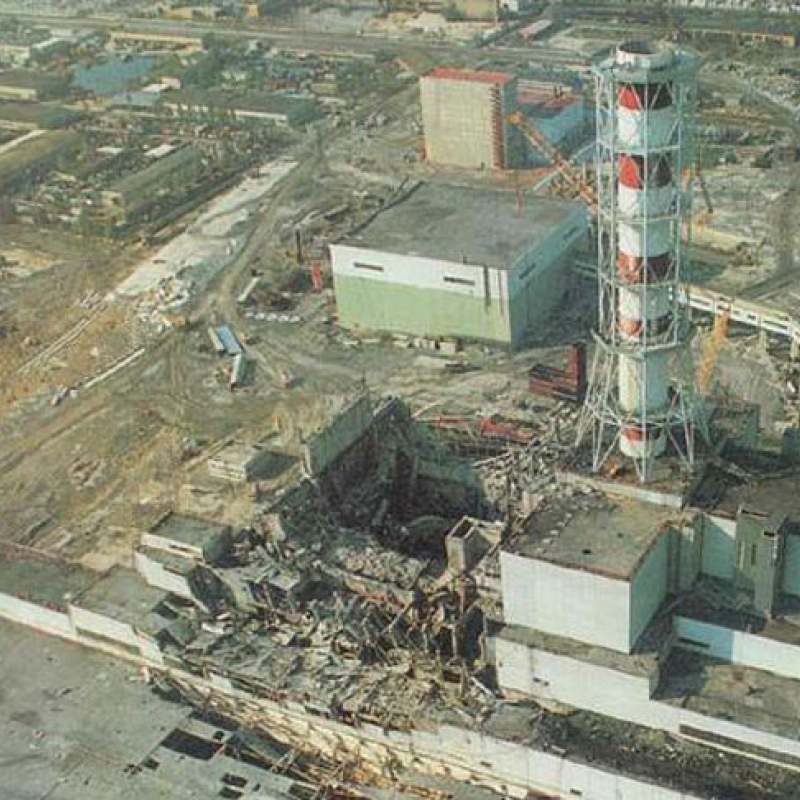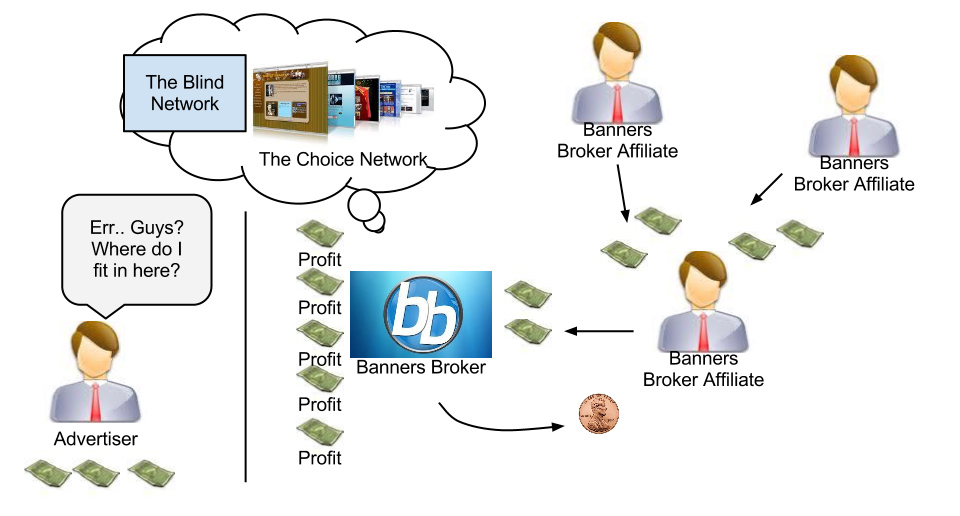Introduction
This post was written especially for those who are involved in Banners Broker – either you have personally made an investment, or you know somebody who has. NB: Please don’t simply dismiss me as a “negative blogger”. I’m not selling or promoting anything here and I’m not looking to build traffic for myself by using the Banners Broker name. My sole motivation in writing this is to inform, and possibly (hopefully) help some of those who may have been adversely affected by Banners Broker.
Almost a month ago, I wrote a post about Banners Broker, which got quite a bit of attention. If you’ve not read it, I basically analysed Banners Broker and concluded that it is a fraudulent ponzi scheme. Since then, I’ve been keenly following developments, mainly on the realscam forum, the official Banners Broker facebook page, and the Banners Broker website itself.
Bite-sized synopsis
I have a suspicion that my previous posts might have been a bit too heavy-going for some of my intended audience. That’s not meant as a slight; I just mean that not everyone has the time or inclination to spend a long time trying to take in a lot of (at times complex) information.
This time, I’m going to give a very short, straight to the point, bullet-point rundown of the gist of this post. Then you can read more, if you feel like it. Here goes:
- Banners Broker is a fraudulent ponzi scheme.
- It’s collapsing, and there are many signs of this:
- You can’t use your prepaid Mastercard anymore.
- If you try to withdraw with Payza or Solid Trust Pay, you probably won’t be able to due to delays and “technical faults”.
- A lot of the time you can’t even access the Banners Broker website.
- Your panels aren’t moving, or are moving so slowly you won’t even make any money from them.
- You can no longer earn money the way you originally wanted to. You need to write blogs now.
- You cannot contact anyone within Banners Broker to ask why it’s all so bad.
- The only response Banners Broker have to all of this is that you need to “keep the faith”, plus vague assurances about longevity and compliance.
Okay, now if you would like to know more, read on.
My Predictions – One Month On
In my original post, I made a number of predictions. I’m no Nostradamus, and my predictions were hardly original; in fact you could say they were fairly obvious given the premise that Banners Broker is a ponzi scheme nearing its final stages. However, I’d like to take a look here at what I wrote almost a month ago, and what has happened since. Here’s what I wrote back then:
Based on what I have found, and the developments that I see happening within Banners Broker, I predict that the scheme is approaching collapse. I think that affiliates will find it very difficult, if not impossible to reclaim their investments. I foresee increasingly desperate attempts by Banners Broker management to stall payments, recruit more aggressively, discourage withdrawals, and it will become increasingly difficult to actually contact anyone at Banners Broker – support calls already cost $5 per question – something which I find absurd.
The excuses given as to why the service is getting worse and worse, and why it is becoming more and more difficult to make and claim earnings, will get even more outlandish and complex. Finally, it will become impossible to contact anyone at Banners Broker, the panels will freeze, and those behind the scheme will disappear.
Reading this, I hope you can identify it with some of your experiences with Banners Broker over the past few weeks. To elaborate, I will go over a number of recent developments which I believe clearly demonstrate that Banners Broker is currently undergoing a massive, slow-motion meltdown.
Anatomy of the Meltdown
Mastercard pulls out, you can’t get your money out
One of the methods of withdrawing earnings from Banners Broker has been via a prepaid Mastercard. Although Banners Broker have never had any endorsement from Mastercard (they obtained the cards from an independent supplier, Vector Card Services), the card seems to have imparted an air of legitimacy to the scheme. I’ve heard this line personally from an affiliate, and it’s understandable why the card would give an extra sense of security. It was also promoted as a faster way to get cash out than the alternatives.
On March 13th, Banners Broker made the following announcement via their website member dashboard:
Dear Banners Broker Prepaid MasterCard Cardholders:
As of today March 13th, 2013, the Banner Brokers Prepaid Card program has ceased to operate. Vector Card Services Limited is contacting cardholders regarding the winding down of the card program.
As of the date of issuance of this email, there will be no further authorization of loads to cardholder accounts and cardholders will have a limited time period to withdraw all funds from the card. As a cardholder you have until Friday March 22nd, 2013 to withdraw all funds from the card.
At the end of this period all remaining funds on the card will be returned to you the cardholder upon completion of the appropriate paperwork and receipt of a copy of your passport.
Our strong recommendation is to withdraw all funds from the card. This is the simplest option to draw down all remaining funds from your Prepaid Card. More information will be communicated to you. A second notice will be sent to you with a link to a full FAQ to address your questions. Please contact your Banners Broker representative for more information.Vector Card Services Limited
Why did this happen? Here’s what Banners Broker CEO Chris Smith said in a webinar shortly after the announcement:
Unfortunate news that Mastercard has ceased to want to operate with us with our Prepaid Card option. As you know we have been promoting this specifically, as we truly believed this was the best option. Unfortunately Mastercard has the option in their contract to cancel the contract anytime. The email I received said that because of bad publicity surrounding Banner Brokers, they would not want to be associated with BB any longer.
And this is what Vector Card Services’ CEO, Ted Nham had to say in the same webinar:
Facts are, there has been a growing number of online campaigns originating from bloggers, independent and disgruntled BB’er and just plain bloggers, and unfortunatley this has caused quite a stir. … Unfortunately, this online “noise” and bad publicity has come to the attnetion of Mastercard, and even though there is no logic or reason, Mastercard has decided to close the program.
The question is, why is there such a large and vocal group of “independent and disgruntled BB’er and just plain bloggers”. If Banners Broker really is just a great company trying to help out the little guy, why such opposition? This cannot simply be brushed aside by dubbing all critics “negative people”.
Anyway, the situation right now is that affiliates are left with two other methods of withdrawing cash: Payza and Solid Trust Pay. Both notoriously backlogged, with affiliates being made to wait months before they can actually get their hands on their withdrawal. In the words of Chris Smith (from the same webinar):
“I will be honest, we were moving away from these processors and moving toward the card platform because of delays in these ways.”
With no alternative forthcoming, it looks like delays are now officially standard operating procedure. Ultimately, I believe that Banners Broker hope that most affiliates will get sick of waiting, and write off the investment as bad debt.
Bannersbroker.com is crashing and burning
First of all, a little bit of background: Any website resides on a computer somewhere, known as a server. This server is usually owned or maintained by a hosting company. Their job is to make sure that the website is always available to visitors. The amount of time that the website is available is known as “uptime”. Of course, it’s hard to guarantee that a server will be available 100% of the time, but typically a reputable web host will guarantee at least 99% uptime, and usually more like 99.99%. What this means is that the website should only experience, at the very most, about 1 1/2 hours of “downtime” per week (and if my host was that bad, I’d change).
If you are a Banners Broker affiliate, you’ll no doubt have noticed that the website has been down for large, huge, massive chunks of time. I’ve seen various explanations for this, ranging from planned maintenance to cyber attacks. I won’t get into the technical arguments about this, because you’ll probably find it dull. Suffice it to say, whatever the cause of the downtime, the explanations do not make sense.
I run a moderately large e-commerce website. We invest a significant amount of money in ensuring that our website is available to customers at all times. If something goes wrong at the hosting company’s end, I can call and speak with an engineer who will personally sort out the problem, usually within about 15 minutes.
Banners Broker is an entirely Internet-based operation, with apparently upwards of 300,000 members. It is inconceivable to me that they would use a host that would allow such massive amounts of downtime.
I think there are a few possibilities here:
- Banners Broker are having trouble finding a reputable host who want to be associated with them, and keep having to migrate the site, resulting in the large amounts of downtime.
- The engineers who write the Banners Broker site are rushing to implement new systems of stalling panels and payments (e.g. how do we implement this whole blogging thing?).
- The whole thing is a ruse, simply designed to prolong the scam, and keep affiliates waiting. All the while your monthly subscriptions for traffic packs and the like are probably being processed without a hitch. Funny, that.
Your panels aren’t moving
Let’s for a moment suppose that a “panel” does indeed represent some kind of real commodity (note: it doesn’t). The movement of your panels represents earnings for you. From what I gather, they’ve either stopped moving, or are moving so slowly that they will make barely enough to keep pace with your monthly subscription fees. To be clear: this is the very essence of what you are interested in with Banners Broker. If the panels don’t move, what are we all here for, exactly?
Here is an explanation posted on the official Facebook page:
As our hard working IT team diligently works to make our website better in v2.9 and building toward v3.0 it requires that certain features of the site be placed on hold. The ability to visualize panel movement is one of those features. There is no need to be alarmed however. The software is still actively recording panel traffic, and once the work on the site is at a level where the panel movement can be switched back on, you’ll see your panels as they’re supposed to be. This is an unfortunate circumstance, but a necessary one in order to ensure the stability of the site.
First of all, this is too vague. I write internet-based software systems for a living, so I have an idea of what makes sense and what doesn’t. This doesn’t. If the panel movement is happening behind the scenes, then displaying the figure from the database on a web page is a trivial thing to do. Seriously, this explanation does not cut it.
Imagine this same explanation applied to another financial system: You check your bank account, and your wage doesn’t show up. Don’t worry – the money’s been put in there, but our internet banking system has a problem visualising the movement of money. Are you really comfortable with that?
Again, keep the faith guys – we’ve got it all under control.
Banners Broker is no longer a passive income source – welcome to the world of blogging!
I would bet that the vast majority of affiliates were especially attracted to Banners Broker due to the promise of earning money without having to refer people, or do any other form of work. That’s all changed of late, apparently in the name of compliance; since Banners Broker wants to be thought of as a business rather than an investment opportunity. Whatever the logic behind it, gone is the prospect of logging in a few times a week, clicking around a bit, and watching your eWallet fatten.
As far as I can tell, there seems to be two ways to qualify your panels now. Either get more people into Banners Broker (remember my prediction of encouraging more recruitment?), or write blogs.
Here is a bit from a webinar on the 6th of March:
INCENTIVE TRAFFIC – no referring needed. but it is not passive. Write blogs. Example – write 36 blogs, you would earn enough to qualify a blue panel. This is not alot of writing. Is it worth spending one hour or a few hours a day to earn traffic? Yes.
What does this mean for you? Here’s an excerpt from a breakdown I found on the realscam forum (my emphasis added)
Imagine that currently you have 3 green, 3 blue and few other smaller panels that need to be qualified.
2 blue and 2 green can be qualified using Traffic Pack. after that, you cannot use traffic pack until you qualify 1 panel using other type of traffic, so actually from this point, no matter how many traffic pack you have accumulated.
So, we need to qualify 1 blue and 1 green panel, which need in total of 180000 traffic
180000 / 1500 = 120 blog article submission. That is 4 blog submission of at least 250 words every day.
No big dealwe all can do this.
Now lets say your account is much bigger, so lets add 3 red and 3 black panel. Again 1 red and 1 black have to be qualified using traffic other than traffic pack:
1 red + 1 black = 1620000 traffic required / 1500 per blog = 1080 blog entry which is 36 blog / day [view the original post here]
Ask yourself this: do I want to write potentially dozens of blogs every day? Do I have the time to do that? Do I even know how to write a blog?
Having recently gotten into the world of blogging myself with this site, I can tell you that it does take quite a bit of time. But then again, I’m doing it out of love, rather than for money.
Above all, take a look at how much cash you have managed to get out of Banners Broker so far (I mean actual money, not the number displayed in your eWallet). Okay, are you prepared to spend hours a day to achieve a similar level of return from now on?
We won’t even get into trying to figure out exactly how writing a blog translates into ad impressions and thus qualifies your panels (my brain is still recovering from my last gruelling analysis of Banners Broker business logic). At this stage, such analyses are purely moot.
Conclusion – what can I do?
In my original post on Banners Broker, I took a rather cautious and conservative tone. I just wanted to present the facts as I saw them. After witnessing what has occurred since then, I have become emboldened in my attitude towards Banners Broker. I cannot but give the following sincere and heartfelt admonitions:
- If you still have money in Banners Broker, try to get it all out, now. I fear this will be impossible, but it’s worth trying. For any money paid in within the past 120 days, look into the possibility of claiming a chargeback.
- If you are paying money into it, then stop now.
- Recommend to everyone you know who is also involved that they get out now. Share this article, and share my original article which explains why all this is happening.
- If you live in the UK, report your experience of Banners Broker to http://www.actionfraud.police.uk/
- If you have made profit (real cash, not eWallet) from Banners Broker, consider the fate of a similar internet-based ponzi scheme, Zeek Rewards, that was closed down by the US Securities and Exchange Commission in 2012. Those who profited from the scheme are now being pursued to claw back the earnings and distribute them to those who lost out. You can read about the case here: http://www.zeekrewardsreceivership.com/
I think this is the last I will write about Banners Broker. The meltdown will continue, probably for at least another few weeks or even months. All that remains is to watch it melt, and try to help as many people out of the radioactive debris as possible.
Michael






